I've been thinking a lot about how to create a successful social media strategy. Nowadays, everyone and their mother (literally) has a blog, a Facebook, and a Twitter and it's becoming harder and harder to differentiate yourself from the masses. It's been less than 2 years since Social Media has become "the next big thing" and it seems like things are already moving into a new area of innovation. I can't help but think of recent campaign from agency Crispin Porter & Bogusky called "Shocking Barack" when I try and think of the future of social media. At the heart of the campaign there is Facebook, Twitter, and a blog, but the execution of the campaign has created something that transcends traditional media standards and makes way for a whole new type of innovation. Imagine a company comes to you with the question, "How can you increase brand awareness for our brand of electric motorcycles?" This is essentially the question Brammo, a racing and motorcycle company out of Oregon, asked of CP&B. While the traditional components of social media were involved, the agency took things to the next level by proposing a mobile documentary, outlining the journey of a Crispin creative director and a Brammo bike designer as they attempt to present President Barack Obama with an electric bike of his own. A quote from ShockingBarack.com says it best: "Our plan is to retrace the route of the automotive CEOs who went to Washington DC asking for government loans. But instead of looking for aid, we'd like to present President Obama with a homegrown solution to the transportation crisis. And instead of flying in a corporate jet, we're riding Brammo Enertia powercycles. We're just a couple of guys who work for Brammo, but we want to show that there's a better way to get from Point A to Point B. And we want to have a little fun while we're doing it. So join us as we surf from plug to plug in a quest to meet Obama, fueled by nothing more than electricity and the kindness of everyday Americans." It sounds like a basic idea at heart, but what truly makes this one of the greatest social media campaigns in recent history, is the social media coverage and interactive tools that make the campaign 100% social. At its heart ShockingBarack is a blog. Sure, the riders update each day from the road, tell stories of traveling, and share what they have learned from the journey. But the true entertainment comes in the form of video diaries outlining the daily trials and tribulations the riders face. For example, in this video below, you'll find the two riders asking the owner of a local laundromat if they can charge their bikes inside the establishment. Little things that make for an exciting journey and an interesting look at how you can essentially travel anywhere, anytime, as long as you have electricity. Another aspect of social media are links to literally every possible aspect of the journey. On the site, you can email the White House to inform them of the trip, you can Tweet the location of the riders while you view their exact position on a GPS enabled map, you can inform the riders of your location and offer them an invite to sleep on your couch, or you can even send them your name and have them engrave it on the bike. It's campaigns like this that are truly shaping the advertising industry and the strategy companies are implementing through social media. Who would've thought of sending two men on a journey to the White House just to sell some bikes. While most companies can't afford 24/hour news coverage, a team of creatives taking a 6,000 mile journey, or the creative concept behind a cutting-edge website with every social media tool in the book, this is just the beginning. Brammo took a leap and made a lasting impact on the industry. As you'll see below, in the end, they never made it to the President himself. In life, some roads just end. In the case of Brammo, they hit some bumps and took a few wrong turns, but in the process created a campaign that will remain on the road forever. They traveled 6,000 miles at a total cost of $4.52. How's that for gas mileage? Here's the final video from the guys on ShockingBarack. They weren't able to give the President the bike, but they left it in Washington in hopes he'd get the message. As they say in the video below, "It's not the fairytale ending we'd hoped for, but it's a real one and that might even be better." In order to truly understand this campaign, you almost have to check it out for yourself. Feel free to visit ShockingBarack.com to see how the entire campaign went down. I think it's one of the most inspiring uses of social media, but maybe I've just fell of my bike too many times.
1 Comment
So a new game has emerged online called Foursquare. Well, it's not really new and it's not really a game, but nonetheless, it's here and it's creating quite the buzz around the internet amongst addicts like myself. What is it? Look no further than the developers description:
"Think: 50% friend-finder, 30% social cityguide, 20% nightlife game. We wanted to build something that not only helps you keep up with your friends, but exposes you to new things in and challenges you to explore cities in different ways." Alright, time to do some translating. Foursquare is a social media platform that uses your mobile phone as a human GPS device. You check in at various locations around St. Louis, and earn points with each checkin. It not only tells your friends where you are, but allows you to compete against them to become the "king of the streets." For some of you, this might be a tough sell. But I've come prepared with examples. Everyday, I go to Club Fitness off Manchester Rd. Each time I go, I check in on foursquare through my iPhone. This tells everyone where I am at and gives me a point for leaving the house. Later on, I may go to Starbucks or Bread Co off Brentwood. When I check in there, I get more points for hitting another location, and it once again tells my friends where I'm at. What's the point of this? Well, there's multiple theories. For starters, this is an application that allows your friends to know where you are at all times. It also rewards you for getting up and getting out of the house. What else? It allows you a greater opportunity to get out and explore the area you live. Deep down, foursquare isn't about telling people where you are. That's one of the perks, but it's not the main point. Another component to foursquare is adding venues and writing your own "tips." For example, I added Plaza Frontenac Cinema as a venue and gave the tip, "Head to Plaza Frontenac Theater, grab a glass of wine, and enjoy a limited release film with your girlfriend." This is then forwarded to everyone in the St. Louis area. Someone can see this, and add it to their "to do list." For example, I looked at the "tip list" and someone said, "Go to Maggianos Little Italy and enjoy the huge pasta plate." I added it to my to do list, and when I actually check in at Maggianos and complete the task, I'll get points. A really interesting premise. I could go on and on about the potentials of foursquare. You really have to experience it for yourself to truly understand it. It's one of those platforms, even more obscure than Twitter, that tends to be a hard sell for individuals who aren't deeply rooted in social networking. i will give you this - if you join foursquare, you will find out a lot about what people are doing and what places you should visit in your area. You're getting tips from the very people who go to these places. You're not getting reviews, your getting objectives. The possibilities are endless. I'm now going to run over to Blueberry Hill, order a cheeseburger, and borrow Scrabble from the bartender while I enjoy the delicious meal. Then I'm going to go to Ted Drews and get a concrete. I'm going to ask them to flip the cup upside down before they serve it. Why am I going to do all this? Don't ask me, just trust the users on foursquare. Visit the site here. I just watched a Social Media conference online, specifically a session on "How to Grow Your Brand on Twitter," and it has left me feeling even more passionate about the platform and it's commercial marketing capabilities. Not to say I was nervous about my previous comments (I have had some backlash from anti-tweeters)but I do feel a lot more confident in knowing I am not the only firm believer in the importance and relevance of Twitter within the area of branding, marketing, and advertising. The conference focused on a panel of Twitter enthusiasts - a social media consultant forComcast, the man behind the Starbucks twitter account, a venture capitalist, and the social media/branding strategist behind Kogi BBQ, a Korean BBQ taco truck. The conference starts out with the most basic example of how something like Twitter can affect a commercial business and a brand. Kogi BBQ, an infamous Korean BBQ taco truck in Los Angeles, has used Twitter from the ground up to build its business. What started out as a few guys running into a club to sell a few tacos at Midnight has now turned into one of the most sought after franchises in West Hollywood. Basic operation? Post where the Taco Truck will be through social networks - let the fans flock. Let's put it this way, according to brand strategist Mike Presad, if the truck were to post it's location right now, within 30 minutes, there would be a line of at least 50 people waiting to get some food. Couple this with multiple trucks at multiple times a day, and were talking some serious return on (cheap) investment. While Kogi BBQ offers an innovative example of how next-gen businesses can capitalize on Twitter, it's some of the other brand perspectives that truly shine a light on the benefits of the platform. While I won't sit here and quote the findings, I'll give you some notes on what I would consider the most important aspects of the panel. 1. It's not strength in numbers, it's the strength in the relationships. 2. The authenticity of a brand is easily accessible on Twitter. 3. I'd love to hear your thoughts on the subject of Twitter. Is it like a parrot - smart and sweet, or more like a bald eagle - on it's way out with a few people (like me) trying to keep it around. Leave your comments in the replies. The video, if you're at all interested, can be seen below: I've finally figured it out. I'm not gonna lie though; I've had some help. After stumbling upon an article titled "The Age of Media Arts," the switch has finally been flipped. What's the profound discovery? Consumers have new demands. In fact, consumer isn't even always the right word to use when talking advertising. There's a new end-user now, and they're called an audience. What's the difference?
"A consumer is someone who intends to buy, and audience member is someone who has already paid the price of admission in some way and now, intends to be entertained." (David Burn - AdPulp) For those who've been following my blog, it's pretty obvious that I have a strong interest in marketing for the masses - social media, interactive, television, print, video, guerilla, and viral. I'm an advocate of attention-grabbing, call-to-action, information, communication, and education. I've never really thought of the thing I'm most interested in though and it's been right in front of my eyes this whole time: Entertainment. In his article on The Age of Media Arts, Lee Clow, Chairman and Chief Creative Officer of TBWA/Worldwide states, "We must stop talking about above the line/below the line and traditional/nontraditional and instead talk passionately about the ideas that invite people to our brands, wherever that may be." It's not a matter of "getting on Facebook" or "getting on Twitter" it's a matter of matching an audience, to a network, to a medium, to a message, to a creative idea. I'm a consumer who loves to find out about new brands. I'm also an audience member, and I am constantly looking to be entertained. My blog on "The Alumni Conspiracy" talked about finding ways that my high-school and college will stay connected with me. Send me videos, links, press releases, news feeds, etc. Entertain me. My blog on "Interactive Advertising" talked about grabbing my attention, educating, and informing me, but most importantly entertaining me. My blog on "The 4th Dimension" asked some of my favorite movie stars and bands to entertain me through videos and social networks. I could go on and on. These feelings aren't just mine though. I'm just one of the millions of consumers out there looking for ways to connect. Why do people like Gatorade ads, Nike ads, Apple ads, and Beer ads? Because millions of people buy into these products, own these products, and feel strongly about these products. These products don't need any more attention. They entertain through celebrity endorsements, sports promotions, visionary direction, and exciting execution. It's not as big of a risk for these companies because brand awareness is no longer their priority. They've moved on to bigger and better things now, and all they need to do is entertain. Just as Mr. Clow states, I think we're at a time where everything a brand creates doesn't have to fall under advertising. Sure, consumer-based advertising will always be around but the who knows what the future will bring? One thing is for sure though. The future will be about the blending of art and media in traditional and non-traditional ways and agencies will need to focus on finding ways to maintain, sustain, and most importantly, entertain consumers and audience members alike. The future is now, are you on board? I'm not going to lie to you. It's official. I love Twitter. Just thinking about this topic gets me excited. I know I'm going to forget things, but in a rushed attempt to spread the love for my new social network of choice, I will do whatever it takes to convert you.
Every one of my friends has Facebook. Not a whole lot of them have Twitter. Let's get things straight off the bat though. I'm not trying to convert you so I can follow you, creep you, communicate with you, or stalk you, I'm converting you so that you can be exposed to the newest, most innovative form of social media. I don't claim to be an expert, heck I don't even have a ton of followers, but I do know that I understand the fundamentals of Twitter and the ways in which it can be used as a universal source of media for all of your sports, political, business, entertainment, music, and movie news. This isn't a post about social media and Twitter in business. This is about using it at the most basic - To entertain and excite. It's about getting your news delivered directly to you, all day, every day. A basic introduction for the Twitter-impaired. You are allowed to use 140 characters or less to communicate "What has your attention." I know, this sounds a little confusing at first, but those who "get it" are making it pretty darn simple for the newbies to catch on. Ok so we need an example. Say you're a sports guy/girl. Each day you check certain websites to catch up on sports news. You go to ESPN, Sports Illustrated, STL Today, and MLB.com. When you visit these websites, you sift through all the information that interests you and find the articles you want to read. What can Twitter do for you? It can send these websites to you. Every story they post, editorial they feature, and picture they post can be sent directly to you, leaving you with all the information you need to get your sports fix. All you gotta do is follow these websites on Twitter. I'll use an example that's a little more close to home for me. I love movies. I have certain movie reviewers that I like to catch up with before I hit the megaplex each weekend. Roger Ebert, Reelviews, RottenTomatoes, and Pajiba all have Twitter accounts. I follow each of them. When they post a movie review or a feature story, they post the link to it on their twitter, and the message is immedietly delivered to me. When I wake up on Friday mornings, it's usually to about 10 different tweets all containing movie information from my favorite reviewers. I like to use the analogy that Twitter is basically the best magazine you've never read. All day, every-day I receive updates through Twitter. I have different categories just as a magazine has different sections. I have advertising, which relays all the information I need to know each day about the advertising industry and the different campaigns being worked on. i have music, with posts from my favorite bands and music sites like Rolling Stone. I have a friends category that fills me in on what my friends are doing. Lastly, I have an entertainment column that has all information from celebrities and celebrity news columnists to television and radio stations. I'm essentially being delivered Rolling Stone, AdWeek, the Business Journal, and People without the wait and without the cost. It's truly surreal. What I'm getting at with Twitter is this: It is the newest form of interactive media that not only allows you to share information on yourself and what your interested in, but also allows information to be delivered directly to you all day, every day and only from sources that interest you. I think everyone needs to jump on board right now and see what you're missing out on. In the past it was just a phrase, but in today's world I think it's come true: The bird truly is the word. Let me know if you have any questions on how to use Twitter or how to get started. I promise I'm not steering you in the wrong direction. Also, see my post on Tweetdeck in the rants/raves section. It is a must-have application for anyone using Twitter. Check it out here. Ever since the invention of online social media – these are the things that I have been waiting for. Call it weird, call it creepy, call it stalker – but I love the Internet and the idea of the “4th dimension” made possible through social media. What do I mean by this? Well for starters, now you can know what your favorite band is doing, where an actor is eating lunch, or what is going on behind the scenes of True Blood. What’s the problem then? The problem lies in the fact that while many people are taking note of this issue, in my opinion, not many are using social media to their full advantage. What brought this whole idea up? Well, today was the launch of fitness model and actor Greg Plitt’s new website ( There are other people doing this too, the first few that come to mind being Ashton Kutcher, Oprah Winfrey, and Ellen Degeneres. Ellen and Oprah both post monologues, photos, videos, contests, recommendations, insights, and opinions on their respective mediums every day. Usually this involves Twitter, Facebook, and their own branded websites but things such as texts and emails are expanding the spectrum daily. Ashton Kutcher now hires a production crew to go with him everywhere, documenting his every day life from a behind the scenes interview with Conan O’Brien to a candid bikini shot of wife Demi Moore while on vacation (which received over 950,000 views on twitter - Actors and models aren’t the only ones getting in on this online action. Bands are constantly updating Twitter with where they are and what they’re doing, giving fans behind the scenes photos and videos, and breaking down the barrier between listener and artist. I’m still waiting for the “4th dimension” to be broken down further on this one though. Why can’t we get live streams of Dave Matthews in the studio recording his new album, a live feed of Blink 182’s pre-show ritual, or a behind the scenes look at how Kings of Leon drummer, Nathan Followill, chooses his drum set. Maybe it’s just me wanting to be a part of something greater, or maybe it is a whole new opportunity that isn’t being tapped into by many of today’s entertainers. I’m still waiting patiently for this wall to break down completely. I don’t even watch Football, but I just spent four hours glued to the television for a show called “Hard Knocks: Preseason with the Bengals.” Why? Because it’s interesting to see what these football players go though, their families, their training, their ups and downs. The behind the scenes reality. I just read an article about Obama’s personal health plan documenting his daily workout regimen. Tell me you wouldn’t be interested in hearing what the president of the United States bench presses each day, what he eats, and how far he runs. It’s these small facts, these random thoughts, and these little ideas that get me going, and it’s these same thoughts that I think are paving the way for the future of social media. Why do I post these blogs? Because I believe that someone out there is reading them and getting a little sneak peak into my life. If I were an actor, I’d have videos of life on the set. If I were a model, I’d be posting pictures of all the girls I worked with, and if I were musician, I’d put a webcam up during one our practices. It’s this “4th dimension” that I think will be crucial for success in the entertainment industry in the future. Those who can embrace it and attack it with strategy will connect with fans on a more personal scale, something becoming more and more important in today’s society. My next blog will be a more intelligent study of this phenomenon and the power this “4th dimension" has in terms of consumer spending and brands. More specifically I’ll dive into the importance of social media strategy for companies like Vitamin Water, Red Bull, Gatorade, and Target and the importance of having an online personality and interactive brand in a crowded market of competitors. I want to hear your thoughts on this. Are there any celebrities, blogs, websites you follow? Do you ever wish you could know more about your favorite entertainer? Give me some scoop in the comments. I welcome any insights, ideas, or opinions you may have. |
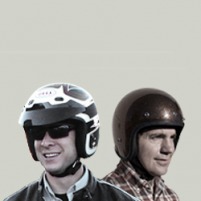
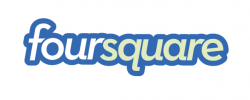
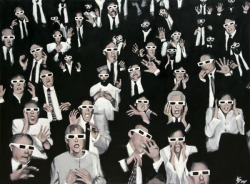
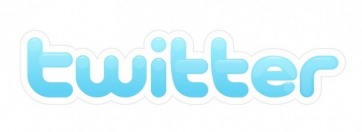
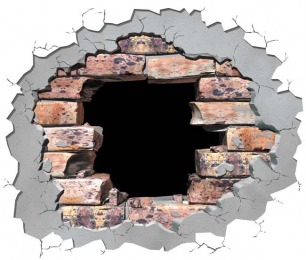
 RSS Feed
RSS Feed